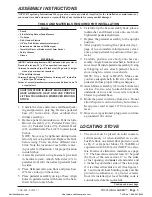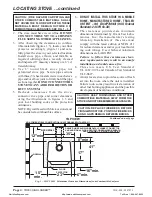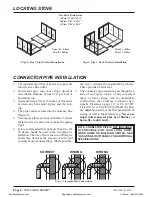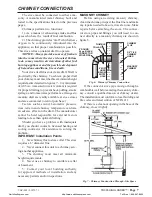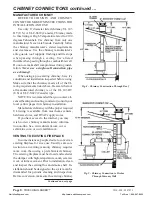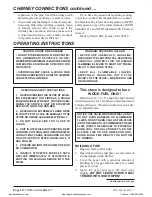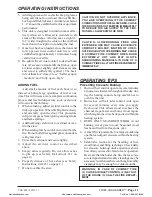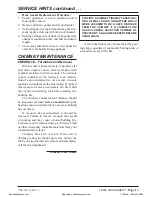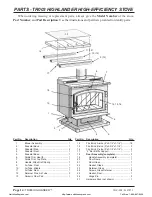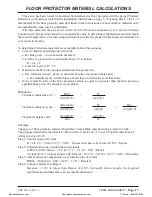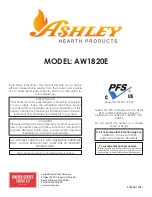
VGZ-028 / 030707.1
TR003 HIGHLANDER™
/
Page
ChImNEY CONNECTIONS continued …
Continued on next page
is structurally sound, the chimney incorporates a
flue liner and make sure it is in good condition.
(A flue liner consists of clay tile that protects the
brickwork of a chimney. If a chimney does not have
a liner, or it is damaged, have it relined by a profes-
sional. DO NOT uSE a chimney that is unlined
or damaged!) If you have any question regarding
the condition of the chimney, consult a qualified
licensed contractor, qualified engineer, competent
mason, certified Chimney Sweep, or a knowledg-
able inspector. Consult your insurance company if
you cannot find a qualified expert.
CAUTION: Not all fireplaces are suitable
for conversion to a wood stove. Check
with a qualified expert.
Many prefabricated fireplaces are of the
“zero-clearance fireplace” category. These consist
of multilayered metal construction. They are de-
signed with enough insulation and/or air cooling
on the base, back and sides so they can be safely
installed in direct contact with combustible floors
and walls. Although many prefabricated fireplaces
carry endorsements from nationally recognized
organizations for use as fireplaces, they have not
been tested for connection to wood stove heaters.
Connecting a stove to such a device will void the
manufacturer’s warranty.
Steel-lined fireplaces are constructed with
1/4” firebox liner, an air chamber in connec-
Do not create a hazard in your home by connecting
in this manner.
FIREPLACE INSTALLATION
Directly connecting the stovepipe into the exist-
ing masonry chimney (figure 10 “Type A” fireplace
conversion) of the fireplace is the only approved
method of installation. This is a complicated and
involved process and to insure safety should only
by done by a qualified installer.
1. An entry hole must be cut through the masonry
and tile liner with minimal damage to the liner.
At least 8” of liner must remain below the entry
position. When locating the stove and stove-
pipe, all minimum clearances must be observed
from combustible surfaces including mantels,
combustible trimwork, ceilings and walls.
Positioning the center of the stove pipe entry
into the chimney 24” below the ceiling should
insure proper clearance for a 6” stovepipe.
2. Install a metal or fire clay (5/8” minimum thick-
ness) thimble. Make sure the thimble is flush
with the inner surface of the chimney liner and
does not protrude into the flue (see figure 4 on
page 6).
3. Secure the thimble with refractory mortar. The
thimble should be surrounded by 8” of solid
unit masonry brickwork or 24” of stone.
4. Install the stovepipe into the thimble as far as
possible without extending past the flue lining
(see figures 4 & 6 on pages 6 & 7).
5. A small airspace (about 1/2”) should remain
between the stovepipe and thimble to allow for
FIG. 10 - Fireplace Conversion
tion with 8” of masonry. These can
be safely used with wood burning
stoves. They contain all the essential
components of a fireplace, firebox,
damper, throat, smoke shelf, and
smoke chamber. Many look identical
to masonry fireplaces and should be
checked carefully before connecting
a stove to them.
Venting a stove directly into a fire-
place does not meet code and should
not be attempted. (This constitutes
connection to another appliance - the
fireplace.) Combustion products will
be deposited and build up in the fire-
box or fireplace. The stove warranty
will be void with such an installation.
NorthlineExpress.com
http://www.northlineexpress.com
Toll-Free 1-866-667-8454



